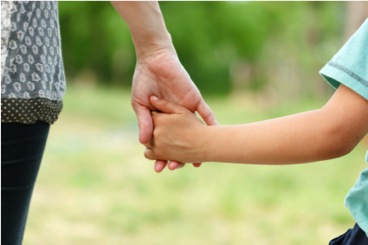Guest Blog Post for University of Minnesota Center for Advanced Studies in Child Welfare
Written by: Amelia Franck Meyer, MS, MSW, APSW, LISW; CEO of Alia

This is the challenge with our current system of out-of-home care. Children and youth are often placed with caregivers or with people who don’t have an understanding of, or a tolerance for, pain-based behaviors. As children begin to DO their pain (not TALK their pain), it becomes too intolerable or risky to adults, and children get punished, shamed, blamed, and eventually moved and disconnected as a result; recreating their initial trauma of disconnection from a caregiver. The cure is worse than the disease.
To stop this cycle of further wounding our children who have already experienced the worst thing that can ever happen to a child—loss of a caregiver—we need to transform our child welfare system in new and profound ways. Removing children from their homes, searching for strangers to care for them, and moving them each time they express the pain this causes by “doing” their trauma through pain based behaviors is, as a colleague of mine recently stated, “medieval.” True transformation is not creating changes in timelines or paperwork. True transformation comes from changing our philosophy and understanding about what children really need.
Children really need to belong, to be claimed. Safety is essential, but it is not enough. We have a system built on physical safety, but you can be physically safe and still feel orphaned, alone, vulnerable, disconnected, and worthless. If all it took was physical safety, we could just round up children and keep them all in little cells. Children need so much more than this to thrive. Humans come into the world physically tethered to another human being, and we need that connection to another human our whole lives long. Children need to belong, to be claimed, in order to be safe. It is in our disconnection from others that we become the most dangerous version of ourselves. Those who don’t belong, who aren’t claimed, can become capable of doing great harm to other humans and themselves. We need to change our indicators of success from only measuring physical safety to include measures of psychological safety, belonging, and wellbeing.
We don’t need another committee, another task force, another change in deadlines, or new forms. We need real change; a change in the way we think about children and what they need to thrive.
What if we built a child welfare system that was based on keeping children with those they know and love, or to whom they are related, even in the instances where removal is necessary to ensure a child’s safety? What if we found and supported those caregivers to take care of these children and understand their trauma? What if we took considered placing children with strangers as an option of last resort? What if we valued and supported our workforce so they were able to be healthy enough to do the incredible trauma healing that was needed? What if we made sure our workforce didn’t get so burned out and traumatized themselves that they themselves, their health and wellbeing, their partnerships, and even the wellbeing of their own children, were collateral damage in the work, too? Our child welfare workforce is turning over at 20%-67% per year. It takes a long time to be good enough at this work to create real change, a long time to create trust and healing, and we need to ask ourselves when enough is enough.
Children can’t just “get over” their trauma; they need to be connected, to belong, to be safe, so they can heal. How can we change our system to get to the root cause of the pain, and thus diminish the pain-based behaviors? When will we be brave enough to engage in the real transformation that is needed instead of tweaking around the edges? We are asking ourselves this very question in our larger society, too. Healing must be done to move forward; people don’t just “get over” profound loss and wounding. We must reimagine a world where our children safely belong in families, and where we belong to each other, as part of a human family.
Truly a beautiful writing that Diggs into by heart…every parent, social worker and those that make the laws and fund the budgets should read. I wonder how many adults are still suffering from the disconnect and still feel the pain.